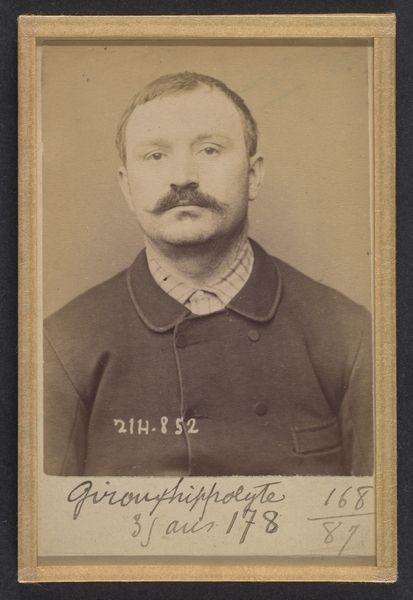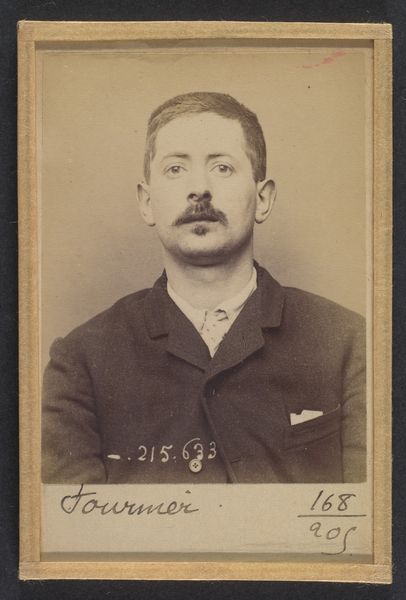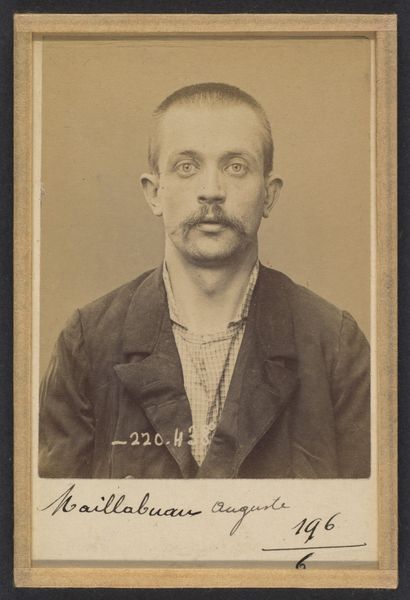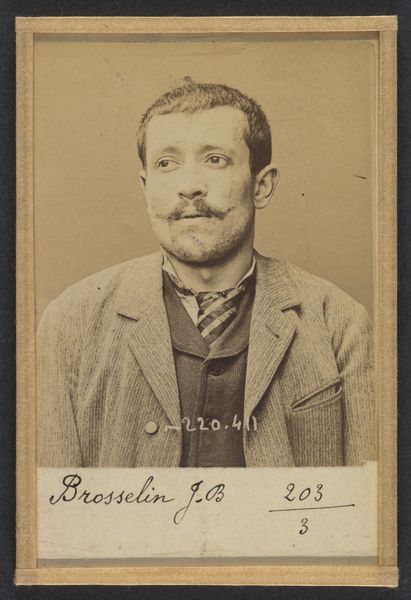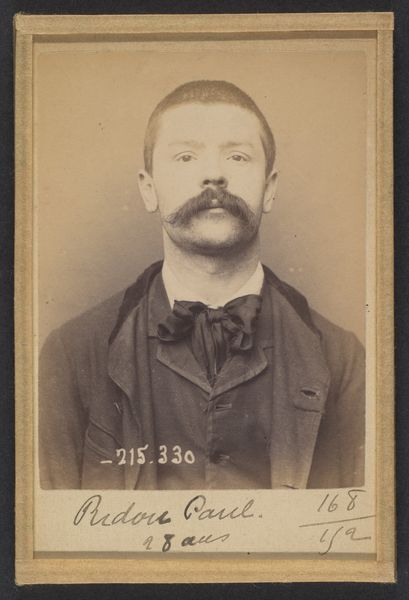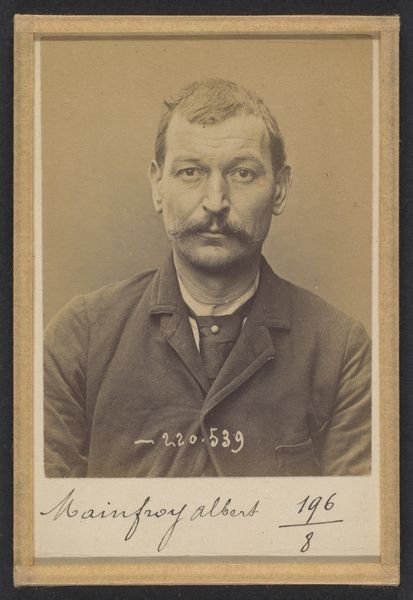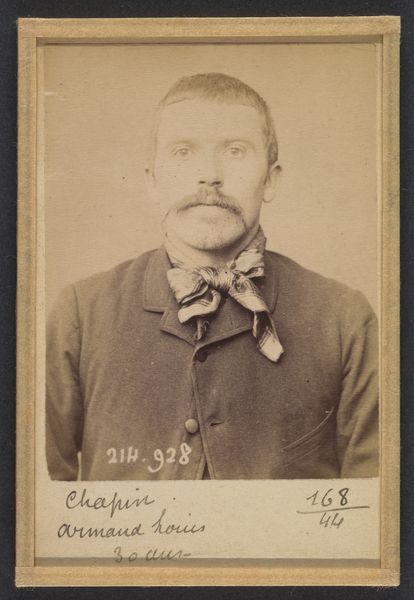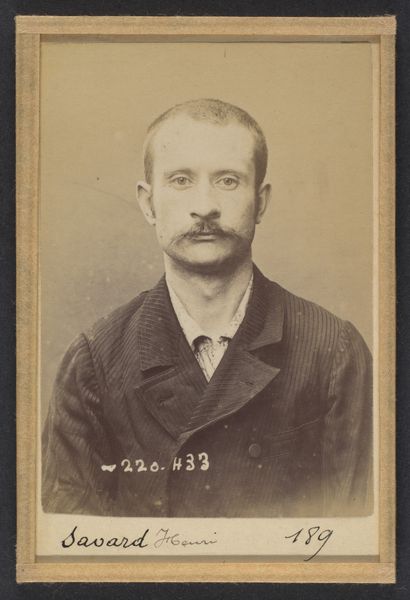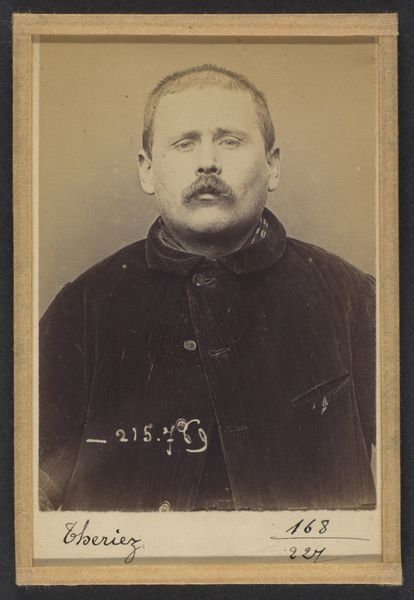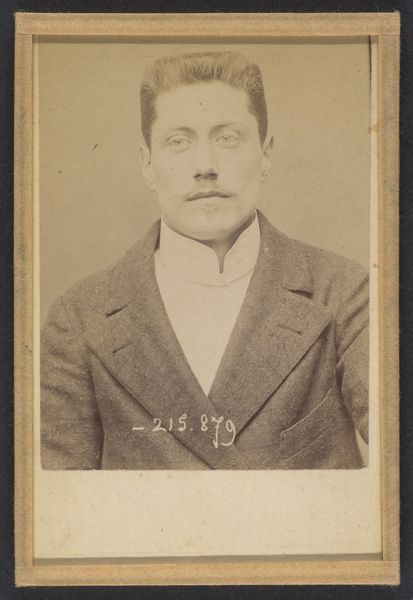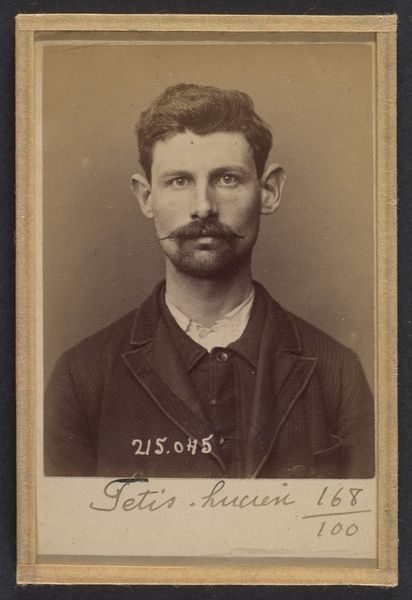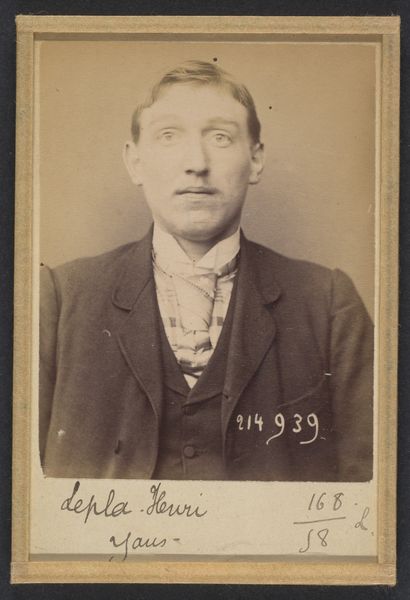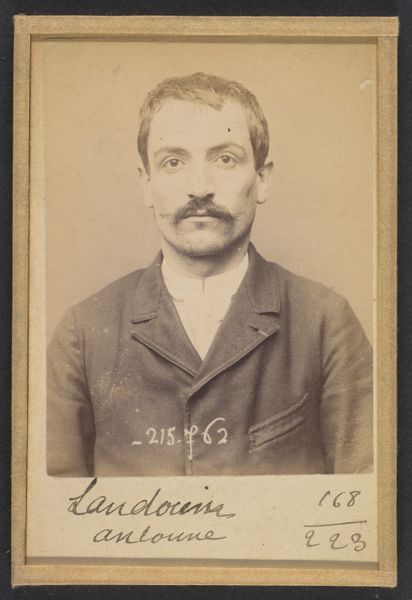
Soulage. Alphonse, Charles. 30 ans, né à Lyon. Menuisier. Anarchiste. 1/3/94. 1894
0:00
0:00
daguerreotype, photography
#
portrait
#
daguerreotype
#
photography
#
19th century
#
men
Dimensions: 10.5 x 7 x 0.5 cm (4 1/8 x 2 3/4 x 3/16 in.) each
Copyright: Public Domain
Curator: Here we have a daguerreotype dating to 1894 by Alphonse Bertillon titled "Soulage. Alphonse, Charles. 30 ans, né à Lyon. Menuisier. Anarchiste. 1/3/94.” It's currently part of the Metropolitan Museum of Art’s collection. Editor: An immediate impression is how stark yet subtly composed it is, capturing an individual against the constraints of...what exactly is the context here? It feels almost bureaucratic in its visual language. Curator: Indeed. Alphonse Bertillon pioneered forensic photography; he developed this system of identification. The subject is, in fact, a 30-year-old carpenter and anarchist from Lyon named Alphonse Charles Soulage. It's a mugshot, essentially, marking a specific point in Soulage's relationship to the state. Editor: So the almost classical portrait composition—the balanced lighting, the centered figure—it's all in direct tension with the image’s purpose as a tool for social control. I notice the numbering crudely inscribed on his jacket—a clear disruption to the attempt at formal portraiture. Curator: Precisely! The materials contribute significantly to its meaning: the photographic chemicals, the paper it is printed on, they all testify to an emerging technology increasingly entwined with governance and power structures. We consume it now in a museum, divorced from its original purpose but still imbued with its history. Editor: And the date inscription serves less as an indication of creation than as a form of labeling, and cataloging a life deemed outside the bounds of convention, which also makes one think of the role of craft -- here joinery-- versus anarchism as labor. Curator: It asks how criminality itself is constructed and represented through artistic means – the act of creating the photograph and labeling is part of a larger system of categorization, marginalization, and punishment. It makes one reflect on photography as a historical tool with an ingrained socio-political aspect to the process and production of making. Editor: A really interesting and important piece offering insight on a lot of levels. Curator: It’s haunting and enlightening. One can't help but view this outside our current sociopolitical framework in viewing it, particularly labor rights.
Comments
No comments
Be the first to comment and join the conversation on the ultimate creative platform.
